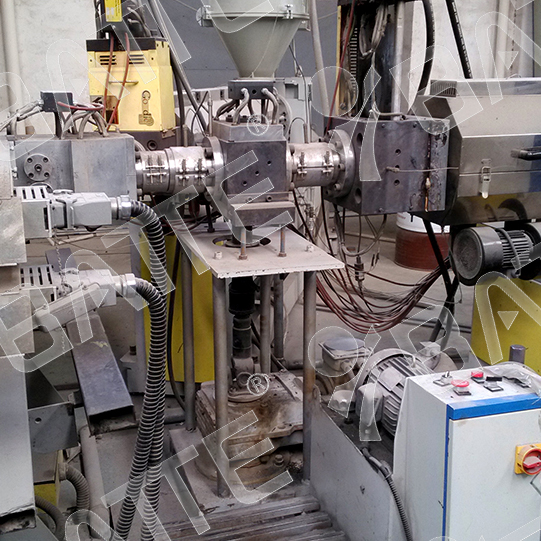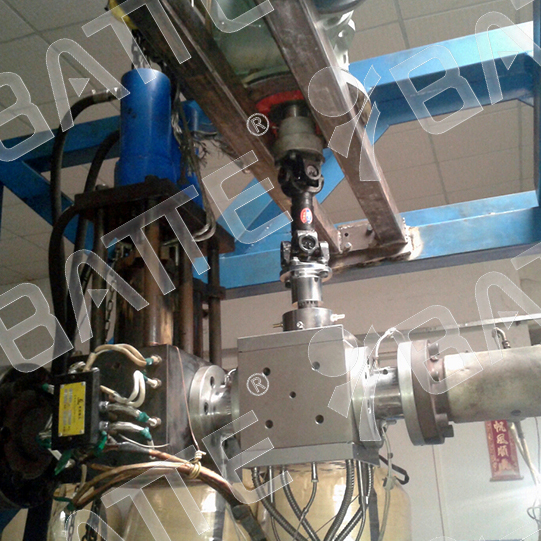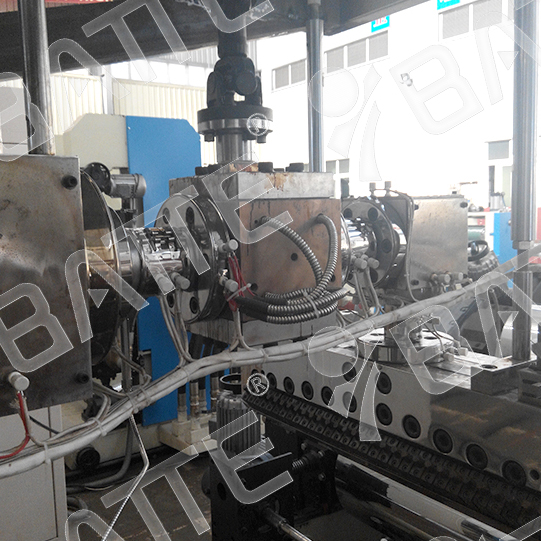How to choose ABS extrusion melt pump?
When selecting a melt pump for an ABS extruder, a systematic evaluation must be conducted by integrating the following core elements to ensure that the pump's performance is highly compatible with the production process:

Matching Basic Operating Parameters
Output and Flow Rate Requirements
Select the pump's displacement range based on the extruder's capacity (e.g., 500 kg/h). For instance, the ZB-B series melt pump offers a displacement range of 0.05-30,000 CC/r, covering the needs of small to medium-sized production lines.
Key formula: Pump displacement (CC/r) × rotational speed (rpm) × density (g/cm³) ÷ 60 ≈ actual flow rate (kg/h). Ensure the flow rate slightly exceeds the peak demand of the production line to allow for a margin.
Pressure Range
ABS melt extrusion requires stable pressure, typically necessitating a pump outlet pressure of ≥25 MPa (e.g., the ZB-B series offers an outlet pressure range of 0-40 MPa).
Evaluate the system's maximum pressure differential (e.g., when the inlet pressure is 0-30 MPa, the maximum pressure differential is 25 MPa) to avoid overloading the pump body.
Temperature Adaptability
ABS melt temperatures typically range from 200-240°C, requiring a pump body made of high-temperature-resistant materials (e.g., nitrided steel, chromium-nickel alloy steel) and an electric heating system (temperature fluctuation ≤ ±2°C).
Example: The ZB-B series can operate at temperatures up to 400°C and withstand cleaning temperatures up to 450°C, meeting high-temperature processing demands.

Melt Characteristics Adaptation
Viscosity and Shear Sensitivity
ABS melt has relatively high viscosity (typically ≤40,000 Pa·s), necessitating a pump with optimized gear parameters (e.g., straight or helical gear design) to reduce shear heat and prevent melt degradation.
Reference case: A company reduced flow rate fluctuations by 90% on an ABS profile production line using a melt pump, increasing output from 380 kg/h to 450 kg/h.
Corrosiveness and Impurity Content
If flame retardants or UV stabilizers are added to ABS, choose corrosion-resistant materials (e.g., stainless steel pump body + high-temperature tool steel gears).
For high impurity content, optimize the flow channel design (e.g., dead-zone-free channels) to reduce wear and extend pump life.
Pump Type and Structure Selection
Type Matching
Extruder melt metering pumps: Suitable for continuous and stable extrusion, such as in ABS photovoltaic panel production.
Reactor melt pumps: For联动 (linked operation) with reactors, choose high-pressure output models (e.g., outlet pressure ≤40 MPa).
Sealing and Heating Methods
Sealing: A combination of spiral and packing seals balances sealing performance with maintenance convenience, with triple seals available for high-temperature conditions.
Heating: Electric heating systems offer rapid response (e.g., ±2°C temperature control via circulating water in the EVA melt pump shaft head), while heat transfer oil heating is suitable for large-displacement pumps.

Summary of Pump Selection Process
Define requirements: Output, pressure, temperature, viscosity, corrosiveness.
Screen pump types: Select metering or reactor pumps based on melt characteristics.
Match parameters: Displacement, pressure, temperature, sealing method.
Verify efficiency: Variable frequency speed control, linear output, maintenance cycle.
Customize and optimize: Flow channel design, heating system, material upgrades.
By following these steps, a melt pump can be systematically selected to align with the ABS extrusion process, achieving comprehensive optimization of stability, efficiency, and cost.
Email: sale@meltpump.com
WhatsApp: +86 158 3833 1071